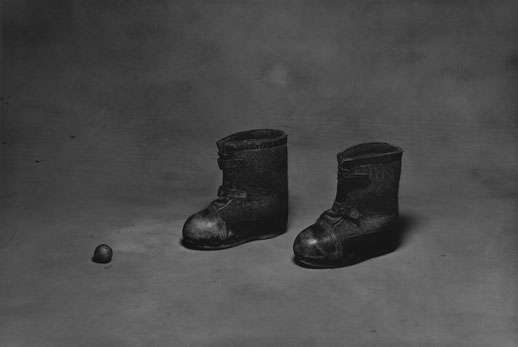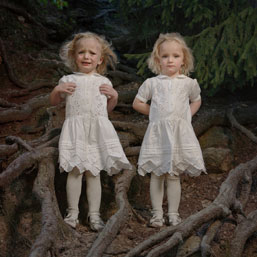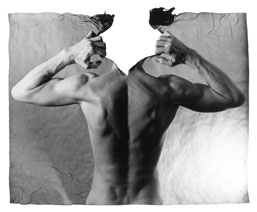Darknesses For Light
The treatment of dark and light has long been an infinite source of subject matter for artists and photographers. On a metaphorical plane, the polarity of darkness and light comes to represent the innate essence of humanity. Whereas lightness is historically seen as holy, sacred, and good, darkness signals the evil, the ignorant, the marginalized and oppressed. The ten Czech photographers presented by Shiseido Gallery’s latest exhibition “Darknesses for Light,” portray these various facets of dark and light in a rich and highly skilled manner.
These photographers are deeply shaped by the tumultuous and often dark history of the Czech Republic, which pervades and gives rise to the birth of a sophisticated aesthetic language used in each of these photographers’ works.

In Jindřich Štreit’s photographs we see a strong focus on human relationships, particularly in ‘Huzová’ (1986), depicting an elderly couple eating together in what appears to be a working-class dwelling. This speaks of companionship and love amidst turmoil – whether it be of social or personal hardships. Štreit, a documentary photographer by nature, does capture something of an element of fantasy, even as the photographs show imagery that is loaded with the weight of history. ‘Bruntál’ (2005) is given this fantasy edge by the incongruity between the astronaut-like figure meeting with a typical rural farming family.

The arresting image of the naked woman that greets us as we first walk down the steps into Shiseido Gallery is by Ivan Pinkava, who deals with the spiritual, the mythical, and employs Biblical references in his photographs. ‘Shoes for Joseph Beuys’ (2007, gelatin silver print) is a tasteful, albeit with a twist-of-humor, homage to Beuys, while ‘They Shall Look on Him Whom They Pierced’ (1997, gelatin silver print) is an obvious Christ reference, yet shot in a way that still bears a sense of mystery. He cites Caravaggio and Da Vinci as his influences and this is evident in the treatment of matte photography, chiaroscuro, and fine detailing.
Michal Macků’s experimentations and manipulations of the photograph to create a “ripping” and “tearing” effect, as well as multiplicity of images, align effectively with his exploration of broken identities, displacement and anonymity. They break the oft contentious and blurry boundary between photography and art. Tono Stano’s brilliant ‘Sense’ (1992, gelatin silver print), and other works, on the other hand, borders on 1930s fashion photography – think Erwin Blumenfeld, Man Ray et al. Stano’s works are staged and poised, and are mesmerizing in their surreal quality.

For an exhibition that is the first to represent contemporary Czech photography in Japan, the choice of photographers, thankfully, was not hinged upon the fact that they were representatives of the Czech Republic and all of the history which that entails. Though of course this is innately embedded in each of the photographer’s works, being a strong cultural aspect from which they cannot be separated, what I observed rather, was a sophisticated level of creative skill that begs the question – how much has the darkness of political oppression been responsible for hiding a creative culture that we could have discovered much earlier? What is also remarkable to note is the fact that most of the photographers’ works are produced through old techniques of photography, yet result in highly modern and, more importantly perhaps, timeless, imagery.
Mio Coxon
Mio Coxon



